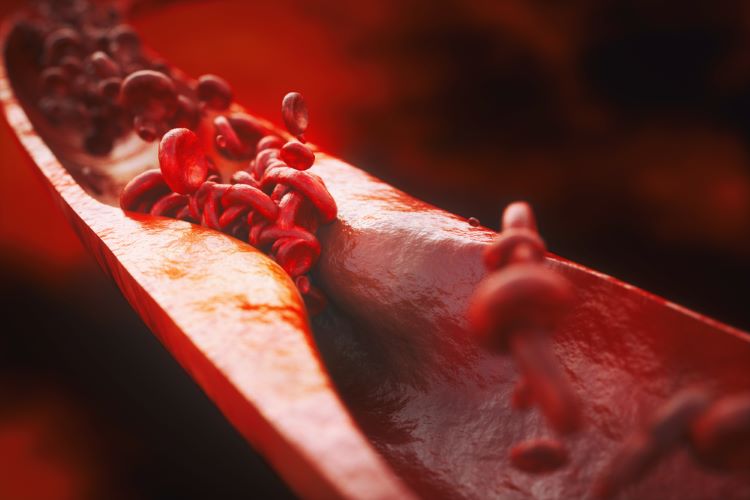Taming cardiovascular risk: the promise of LDL cholesterol lowering therapeutics
Posted: 15 February 2024 | Catherine Eckford (European Pharmaceutical Review) | No comments yet
In this exclusive interview, CEO of NewAmsterdam Pharma, Michael Davidson, offers insight into the low-density lipoprotein (LDL) cholesterol lowering therapeutic landscape and shares promising data from the company’s lead candidate, a cholesterol ester transfer protein (CETP) inhibitor.


Dr Michael Davidson is CEO of biotech company NewAmsterdam Pharma. He is a cardiologist, lipidologist and professor and director of the LIP clinic at University of Chicago in the US. In this Q&A, he explores the trends and challenges within the cardiovascular treatment space, as well as clinical development of the company’s lead candidate obicetrapib, a cholesterol ester transfer protein (CETP) inhibitor for lowering low-density lipoprotein-cholesterol (LDL-C) and ultimately reducing cardiovascular risk.
“For at least a decade from 2013 until recently, LDL lowering treatments were stuck on a paradigm of just putting people on statins and not getting LDL levels down to certain goals”
CETP inhibitors have been around for a while, but they have unfortunately been unsuccessful in getting onto the market commercially. Although not caused by the target itself, there have been four failures in the past, Dr Davidson explained.
For at least a decade from 2013 until recently, LDL lowering treatments were stuck on a paradigm of just putting people on statins and not getting LDL levels down to certain goals, he added.
Dr Davidson highlighted that while heart disease rates have dropped over the last two decades, they have started to rise again.
There are “many reasons” he shared. “Obesity, metabolic syndrome, diabetes epidemic is global, so that aggravates cardiovascular risk… we are seeing a marked acceleration of heart disease deaths, and we need to find new therapies to make a difference. We are hopeful that NewAmsterdam Pharma is part of that solution with obicetrapib.”
What are the top three trends impacting the cardiovascular drug development space today?
Even though patients are on existing [statins] that are well-documented and most likely safe and effective, there are many patients who still have cardiovascular disease, the leading cause of death”
We are recognising now is that there is great data on how to reduce risk by applying lipid lowering therapy like statins. However, there is still what is called a residual risk. Even though patients are on these existing therapies that are well-documented and most likely safe and effective, there are many patients who still have cardiovascular disease, the leading cause of death.
That residual risk falls into three different categories. The first is obesity, which is being addressed by GLP-1 therapies. These treatments have become very much part of the mainstream of how we reduce cardiovascular risk. Obicetrapib has a tremendous potential benefit in reducing lipid residual risk. The third part of residual risk is inflammation, and new drugs are being focused on reducing inflammation to address this risk.
Can you give a brief overview of obicetrapib and its potential for reducing LDL cholesterol?
As a CETP inhibitor, obicetrapib has been developed specifically to lower LDL cholesterol.
In our Phase II trials, obicetrapib has shown a reduction [of LDL cholesterol] in the range of 40 to 51 percent”
This target is very effective and has the potential to reduce LDL and cardiovascular risk. In our Phase II trials, obicetrapib showed a reduction in the range of 40 to 51 percent.
NewAmsterdam Pharma is moving forward into our Phase III trials in the high LDL populations and ultimately, we want to show the benefit of obicetrapib on reducing cardiovascular events.
How do CETP inhibitors work in lowering LDL cholesterol?
CETP is a transfer protein that moves cholesterol from HDL into LDL. When you block it, HDL cholesterol goes up and LDL cholesterol goes down. However, more importantly, that transfer inhibition results in more uptake of cholesterol by the liver and more removal of cholesterol by the intestines. Overall, this leads to more cholesterol being removed from the body. This has ultimately been associated with cardiovascular events and many other ways of lowering LDL cholesterol, to reduce risk in patients at risk for heart disease.
Can you elaborate on some of the results from NewAmsterdam Pharma’s recent clinical trials for lowering cardiovascular risk?
In our Phase II programme, we wanted to focus on patients already on statins who had LDL levels that were still too high, with high cardiovascular risk.
a fixed dose combination of obicetrapib and ezetimibe… [as] a single pill could be one of the most effective LDL lowering therapies, especially as an oral therapy to reduce cardiovascular risk”
In the Phase II ROSE trial, all the participants were on high intensity statins, which is defined as 40 or 80mg of atorvastatin, generic Lipitor or 20 or 40mg of Rosuvastatin, generic Crestor (rosuvastatin). Then we added obicetrapib to those patients; and this showed a 51 percent median reduction.
We also showed that in combining obicetrapib with ezetimibe, we got 63 percent LDL lowering. So we are proceeding with developing a fixed dose combination of obicetrapib and ezetimibe, which would be a single pill that could be one of the most effective LDL lowering therapies, especially as an oral therapy to reduce cardiovascular risk.
What are the benefits for patients taking fixed dose combinations in one pill to reduce LDL cholesterol?
Most importantly, it provides greater efficacy. Obicetrapib alone is in the 40 percent range. Ezetimibe traditionally is in the 15 to 20 percent range. If you put the two together, you actually get synergy more than expected. That is what we showed in our ROSE II trial. Almost all participants achieved the goal using this combination regime.
Entresto (sacubitril/valsartan) is an example of two drugs together having synergy. We believe the same is true for obicetrapib and ezetimibe, not just for LDL lowering but also for reducing atherosclerosis. NewAmsterdam Pharma is exploring the science behind using a combination of two drugs to further reduce atherosclerotic progression. That is one of the key science insights that we learned from our ROSE II trial.
What approaches is NewAmsterdam Pharma focusing on in relation to patient enrolment?
It all comes down to having good site selection, working with a good CRO partner, having academic leadership on the trial, then continuing to work with the sites to maximise their enthusiasm for the trial. It is essential to present what is new and exciting about the therapy.
But most importantly, it is continued site engagement. Since participation is voluntary for patients, we do have to aspire to keep them motivated and engaged in the study, especially for the long-term outcome study, which goes on for five years or so.
Beyond clinical trials, what other challenges are impacting pharmaceutical companies today?
Currently, biotech is predominantly focused on oncology, gene therapy and rare diseases. You see very few cardiovascular companies as a startup biotech, and there are reasons for that. It takes a lot of capital. Large trials take time to get to the finish line.
While Pharma has focused a lot on oncology successfully with many new therapies, there is a trend now to refocus back on cardiovascular.
I do think we are going to start seeing LDL lowering treatments get back on track. But we also have some other exciting therapies like lipoprotein LPL(a) lowering treatments that are on the horizon that addresses residual risk.
In 2024, what milestones does NewAmsterdam Pharma hope to reach?
First, we have the readout from our BROOKLYN Phase III trial, evaluating patients with familial hypercholesterolemia (HeFH) on maximum tolerated statins. In this autosomal dominant genetic disorder, LDL levels are still too high, which comes with very high risk of heart disease. This is our first major Phase III trial read out, which will come in the third quarter of 2024.
Then the second trial is called BROADWAY evaluating approximately 2,500 patients. The patients are on maximum tolerated statins and they have predominantly atherosclerotic cardiovascular disease (ASCVD). That will be our pivotal trial for not just LDL lowering, but also for safety in Phase III, because it is a very large trial. The readout for this trial will come out in the fourth quarter of 2024.
About the interviewee


His research background encompasses pharmaceutical and nutritional clinical trials including extensive research on statins, novel lipid-lowering drugs, and omega-3 fatty acids. Michael served as President of the National Lipid Association from 2010 to 2011. He received his BA and MS from Northwestern University and his MD from The Ohio State University College of Medicine.
Related topics
Biopharmaceuticals, Clinical Development, Clinical Trials, Data Analysis, Drug Development, Drug Safety, Drug Targets, Industry Insight, Research & Development (R&D), Therapeutics
Related organisations
Related drugs
Related people
Related diseases & conditions
atherosclerosis, cardiovascular disease (CVD), heart disease, inflammation









